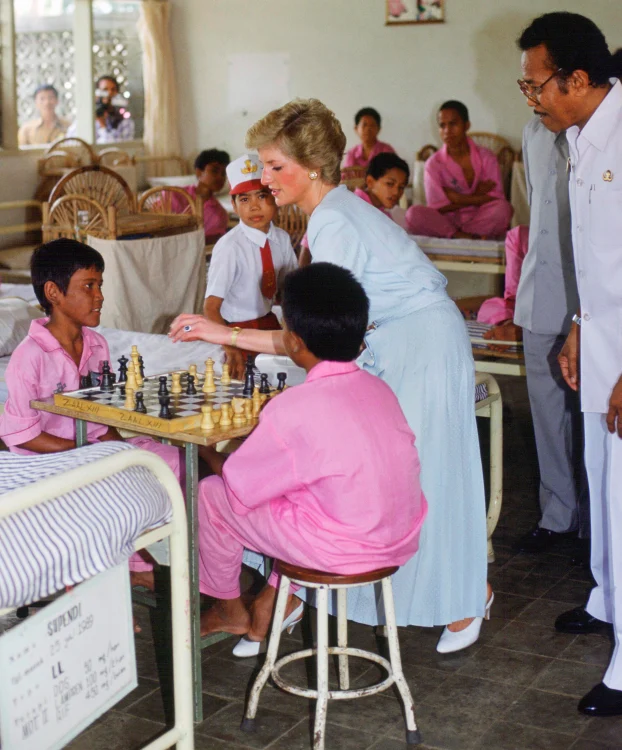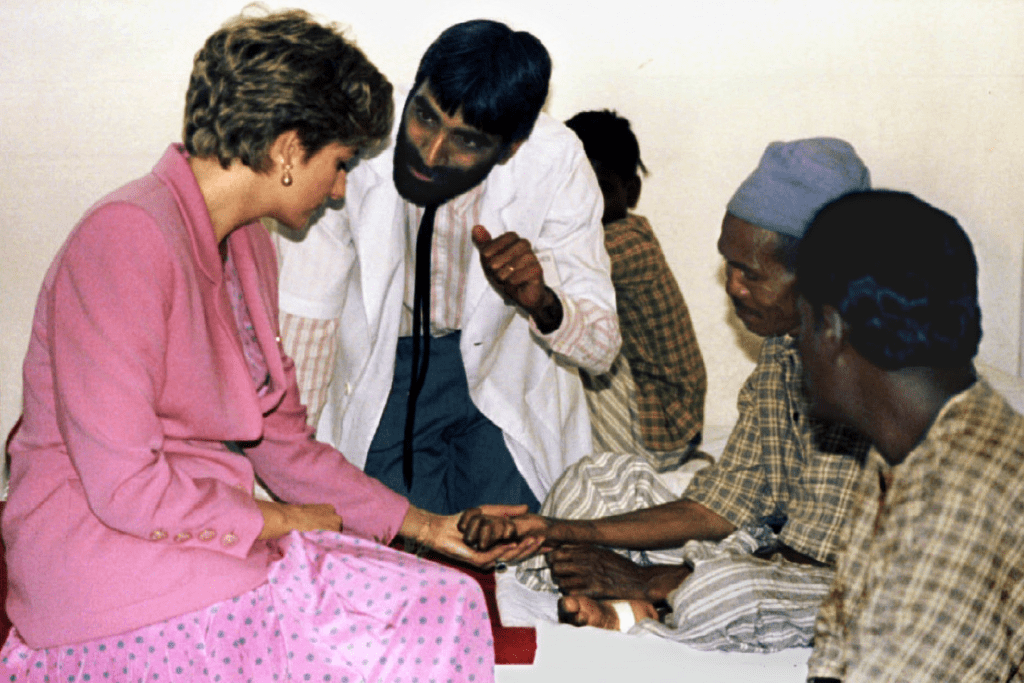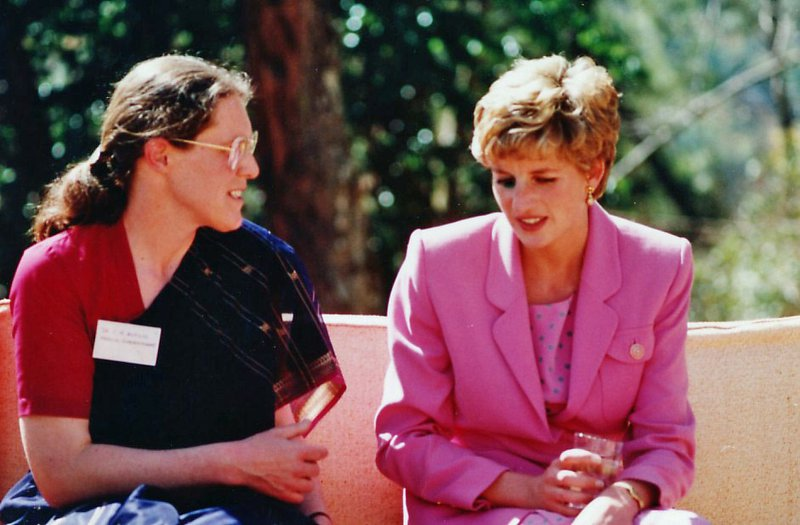A Life Less Ordinary
Few lives have captured the world’s imagination like that of Diana, Princess of Wales.
Global recognition. Beauty. Style. Scrutiny. Wealth. Royalty, and an extraordinary, all-consuming fame that made her both celebrated and isolated.
Yet nearly three decades after her tragic death, one of Diana’s most enduring legacies has nothing to do with fashion or privilege, but with her unshakable capacity to care, and to make the world care too.

The Stigma That Time Forgot
In the 1980s and 1990s, people living with leprosy endured near-total ostracism. Misunderstood and feared, they were often abandoned by families, shunned by communities, and left to suffer alone.
Even as doctors knew the truth, that leprosy is curable and not spread by touch, the stigma persisted. Discriminatory laws in many countries reinforced this social exile, making recovery and reintegration nearly impossible.
The facts were simple, but the fear was stronger:
- Leprosy can be cured with proper treatment.
- Early care prevents disability.
- It is not contagious through touch.
- People with leprosy deserve dignity, not rejection.
Turning Fame Into a Force for Change
What Diana realized, with remarkable emotional intelligence, was that the same spotlight that often made her life unbearable could also illuminate injustice.
Her empathy, born out of her own struggles, became her compass. Over seven years, she dedicated herself to The Leprosy Mission, learning everything she could about the disease, its causes, and its human impact.
Then she did something quietly revolutionary: she used her fame to normalize compassion.
She didn’t just lend her name, she showed the world what acceptance looked like, through the simple, powerful act of touch.
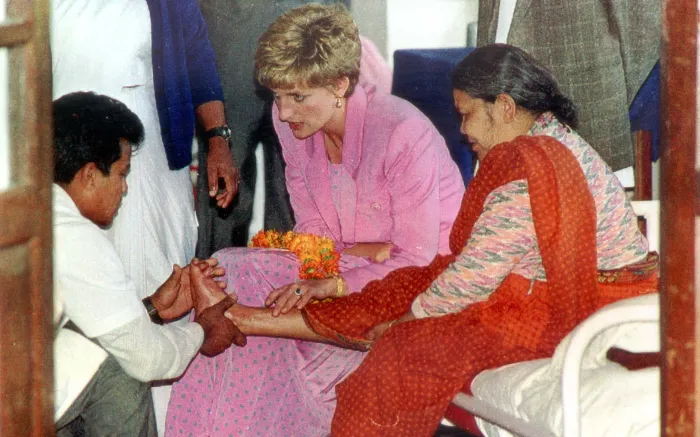
“She Showed No Fear”
Dr. Ruth Bautlin, a physician at the Anandaban Hospital in Nepal, vividly remembers Diana’s visit.
“What was so noticeable was how unafraid she was”, Dr. Bautlin recalled.
“She showed no fear or revulsion when speaking to patients. She held their hands, sat on their beds, and asked questions.
“The patients couldn’t believe that a foreign princess had come to see them.”
In a culture where royalty were revered but distant, Diana’s warmth was radical. Her gestures, small, sincere, human, restored dignity to those long dehumanized.
“Seeing Diana with the patients was inspirational”, said Dr. Bautlin.
“She brought them out of the shadows and into the limelight with her. She modelled kindness and acceptance. All of us were encouraged by her visit.”
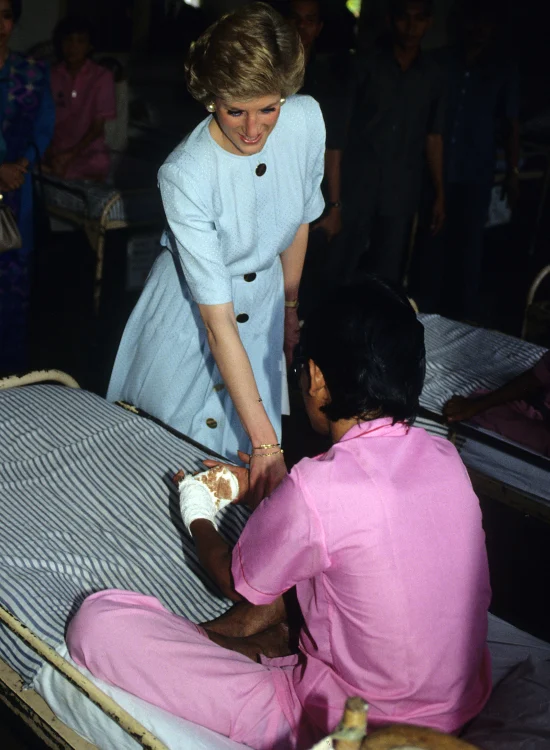
A Lesson in Leadership Through Empathy
Diana understood something that few public figures do: that empathy can be contagious.
Her choice to touch people with leprosy – openly, gently, without gloves – shattered centuries of myth in mere moments.
Dr. Greg Clarke of The Leprosy Mission Australia reflects:
“Every one of us can make a difference, simply by caring, and showing that we care in ways that matter most.
For people with leprosy, especially children, the elderly, and those who are disabled or homeless, your care is priceless.”
As global campaigns now work toward Zero Leprosy by 2035, Diana’s example remains a guiding light: compassion is not passive, it’s transformative.

Writer and pastor Carrie Lloyd shared one of the most defining moments of Diana’s activism on the Storia podcast.
During a visit to India, Diana had planned a stop at a leprosy rehabilitation hospital run by The Leprosy Mission Trust India.
When tabloids caught wind of her plan, they splashed headlines like:
“Don’t Do It, Di.”
The next day, Diana arrived, without gloves.
She held patients’ hands, touched their faces, and allowed cameras to capture every moment.
“That blew the stigma off around the world”, Carrie said.
Her father, the late Tony Lloyd, who was then CEO of The Leprosy Mission England and Wales, famously remarked after the visit:
“What she’s done in five minutes, we’ve been trying to do for 120 years.”

The Power of Care
Diana’s story reminds us that fame, when fused with empathy, can do more than raise awareness, it can reshape humanity’s conscience.
She turned isolation into connection, fear into hope, and stigma into compassion.
And in doing so, she proved that the simplest human act – touch – can change the world.
